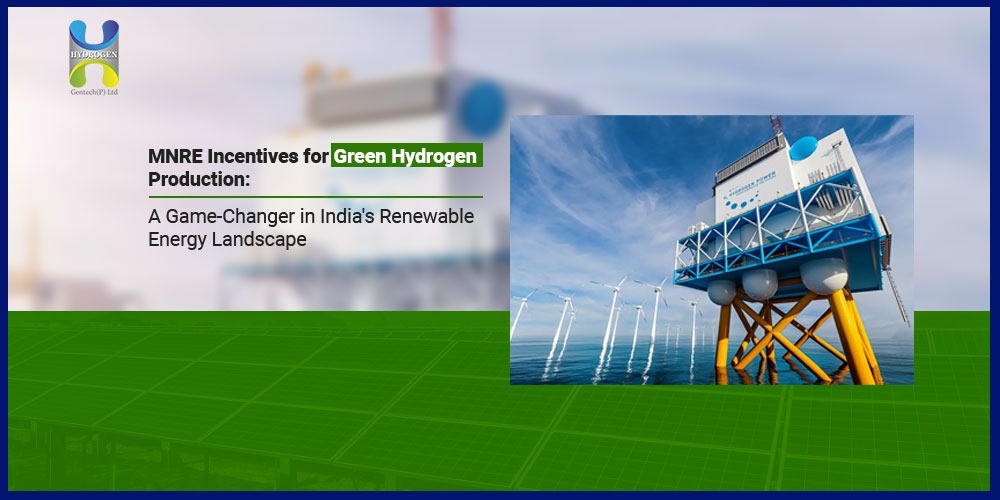
India’s Ministry of New and Renewable Energy (MNRE) has recently unveiled a groundbreaking initiative to incentivize the production of green hydrogen. With an aim to produce 200,000 metric tons (MT) of green hydrogen annually, this program is set to revolutionize the country’s renewable energy landscape. In this article, we will delve into the details of the MNRE incentives for green hydrogen production and explore the potential impact on the industry.
The Strategic Interventions for Green Hydrogen Transition (SIGHT) Program
Under the SIGHT Program, the MNRE has outlined a comprehensive framework to incentivize the production and supply of green hydrogen. The program has a total outlay of ₹130.5 billion (~$1.57 billion) and is divided into multiple modes. Mode 2B specifically focuses on incentivizing the production of green hydrogen for refineries through a competitive selection process.
Incentive Structure and Duration
The incentives provided under the SIGHT Program will be granted over a period of three years. The incentive amount varies based on the year of production. In the first year, the incentive will be ₹50 ($0.48) per kg in the second year and ₹30 (~$0.36) per kg in the third year.
Eligibility and Adherence to Standards
To qualify for the incentives, bidders must adhere to the ‘National Green Hydrogen Standard’ set by the MNRE for the production and supply of green hydrogen. The standard ensures that the production process meets the desired environmental and sustainability criteria. Additionally, bidders must have a net worth equal to or greater than ₹150 million (~$1.8 million) per 1,000 MT per annum of quoted production and supply capacity.
Implementing Agencies and Responsibilities
Oil and gas companies, selected by the Ministry of Petroleum and Natural Gas (MoPNG) and the Centre for High Technology (CHT), will act as the implementing agencies for the program. These agencies will be responsible for aggregating demand, calling for bids, assessing applications, and issuing acknowledgments and awards.
The responsibilities of the oil and gas firms and CHT include physically inspecting production plants, verifying technical parameters, and examining incentive claims from beneficiaries. They will also submit quarterly progress reports to the MNRE through MoPNG. As part of their role, these agencies will be eligible to receive 0.5% of the disbursed incentive amount annually as administrative charges.
Competitive Selection Process
The production and supply of green hydrogen for refineries will be carried out through a competitive selection process. The Ministry of Petroleum and Natural Gas (MoPNG) and the Centre for High Technology (CHT) will invite bids from eligible bidders, and a thorough evaluation will be conducted to select the most suitable candidates.
During the bid submission, bidders must provide an earnest money deposit (EMD) and comply with the provisions regarding the forfeiture of the EMD in case of non-compliance with the requirements. Successful bidders will then enter into a Hydrogen Purchase Agreement (HPA) with the procurers, and adherence to the HPA terms will be linked to the disbursement of incentives.
Incentive Calculation and Allocation
The incentive payout will be calculated based on the production and supply of green hydrogen in the given year. The payout will be determined by multiplying the incentive rate (₹/kg) with the allocated capacity or actual production and supply, whichever is lower. The allocated capacity will remain constant for the duration of the purchase agreement.
In the event of any unallocated capacity during a tranche, it may be carried over to the subsequent tranche, ensuring optimal utilization of resources. This approach aims to maximize the production and supply of green hydrogen and support the transition to a sustainable energy future.
Role of Green Hydrogen in India’s Energy Transition
Green hydrogen holds immense potential in India’s energy transition journey. As a clean and sustainable fuel, it can replace conventional hydrocarbon-based fuels in various sectors, including transportation, industry, and power generation. The production of green hydrogen using renewable energy sources can significantly contribute to reducing greenhouse gas emissions and combating climate change.
The MNRE’s incentives for green hydrogen production align with the government’s vision to achieve energy self-sufficiency, reduce import dependency, and promote sustainable development. This initiative will not only create new opportunities for the renewable energy sector but also foster innovation and technological advancements in the production and utilization of green hydrogen.
Conclusion
The MNRE’s incentives for green hydrogen production mark a significant milestone in India’s renewable energy landscape. By incentivizing the production and supply of green hydrogen, the government aims to accelerate the adoption of clean and sustainable fuels, reduce carbon emissions, and drive the country’s energy transition. With the active participation of oil and gas companies as implementing agencies, this program is poised to transform the renewable energy sector and pave the way for a greener and more sustainable future.
To stay updated with the latest news and developments in India’s renewable energy sector, sign up for our newsletter and join the green energy revolution!

